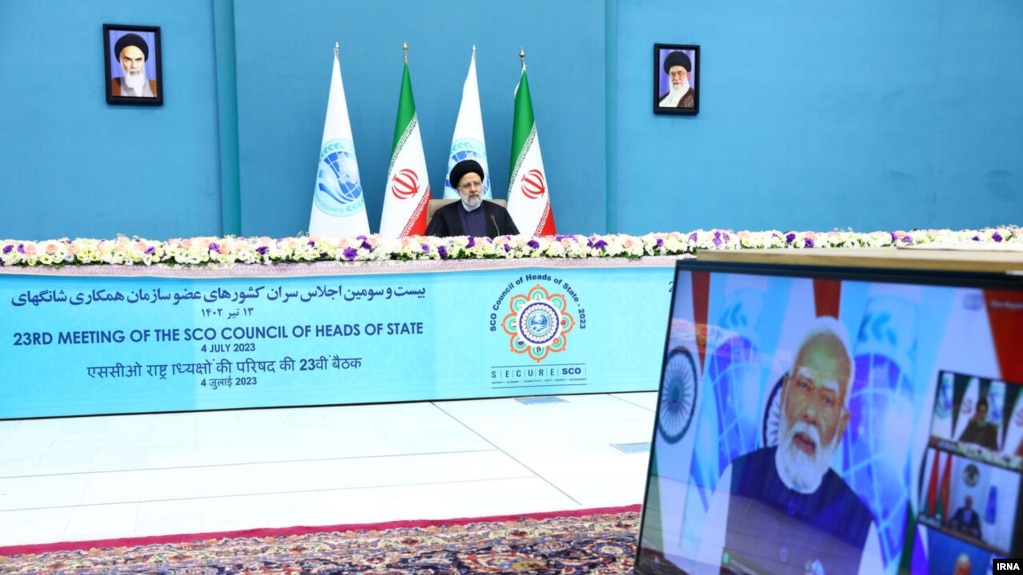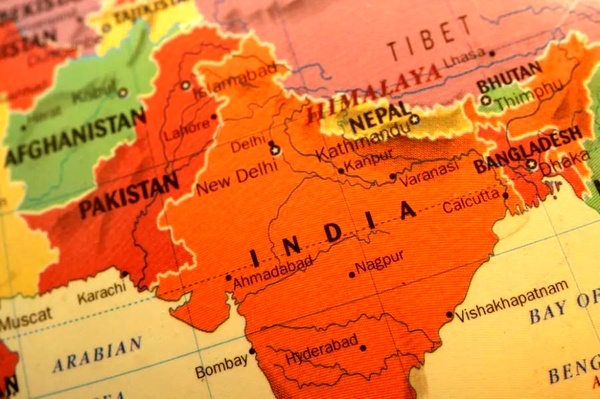
How Come Saudi Arabia and the UAE Can Desalinate Sea Water But Iran Cannot?
The editorial of Setareh Sobh criticizes Iranian officials for not trying to desalinate sea water, while Saudi Arabia and the UAE are frontrunners in this field.
The Gulf states are pursuing projects for desalinating and transferring sea water. Saudi Arabia and the UAE are frontrunners in such projects with the greatest investments in water desalination in the region.
The technology for desalinating and transferring water is not unattainable and rare. Even though it belongs to the Western countries and the Gulf countries have accessed it through the Europeans and Americans, countries like China and South Korea too have acquired this technology and Iran could have cooperated with these countries and followed in the footsteps of Saudi Arabia and the UAE. Other Gulf states too have taken steps for providing water and overcoming the drought crisis through rapidly launching water desalination projects.
Today, the world looks to sea water for overcoming drought while the list of countries that turn to desalinating sea water as a solution to the water crisis is getting longer.
Iranian officials must be asked about why they are so hesitant about using the capacity of the Sea of Oman and the Gulf. If Iran was resolved to do so, it has experienced and skilled experts and can reap the benefits of such projects. It is not acceptable for officials to say they have no access to the necessary technology for desalinating water.
There is enough financial capability for implementing such projects. Global experience demonstrates that sea water can be desalinated and transferred to the central regions of Iran.
The issue of desalination of sea water has today turned into a competition between the regional countries, and despite the capacity to compete in this field, Iran is lagging behind. Given Iran’s adjacency to the Sea of Oman and the Gulf, drought and the shortage of water in Iran make no sense.
Beware of the Flames of Humiliated Internet Users!
The editorial of Etemaad warns Iranian officials that the way they are humiliating internet users by filtering and throttling the internet is leading to an accumulation of anger which will erupt in the form of popular rage like it did last year after the death of Mahsa Amini in the custody of the morality police.
The draconian restrictions on the internet in Iran can ignite social anger just as the issue of the morality police did several months ago. We can say that since the 1990s when the internet entered houses in Iran and became public, never has the internet been so filtered and restricted.
During the past year, Instagram and WhatsApp too were filtered, and now one can say that almost all global platforms are filtered in Iran. Furthermore, limiting broadband services has infuriated Iranians. To overcome these restrictions and obstacles, almost all Iranians resort to using VPNs and anti-filtering, adding to the monthly cost of using the internet.
But Iranian officials talk and act as if no such restrictions exist and Iranian users can easily access the internet; as if users are just complaining about a non-existent issue. By closing the gates of the global internet, Iran has created an intranet and officials keep talking about this network which is scarcely used by the majority of Iranians.
But the real internet in Iran is entrusted to the invisible networks that sell VPNs. They sell their products through official banking systems, they can disconnect it whenever they want to, they can set the prices at whatever they want to, and no public body regulates them.
Users of the internet in Iran must deal with these underground networks. In practice, they have to pay the internet operators for the domestic intranet, and they must also pay for VPNs.
Any Iranian who wants to connect to the internet feels humiliated; when they buy VPNs, they feel humiliated; when the internet slows down, they feel humiliated; when they cannot send a simple file, they feel humiliated.
This feeling of humiliation can be likened to what happened last year when public anger led to protests during what later came to be called the Woman, Life, Freedom Movement. People were humiliated for years because of the way the morality police had treated them. These humiliations erupted in the form of social anger.
Now, the same feeling of humiliation can be seen among internet users, with the same anger accumulating and waiting to erupt.
Neoliberal Orientations in the Seventh Development Plan
The editorial of Eskenas penned by economist Hossein Raghfar argues that in the Seventh Development Plan, all the government’s duties and responsibilities are entrusted to the private sector – a move in contradiction with what is stipulated in the Constitution.
Development plans before the revolution were mostly civil with no claims regarding development projects. After the Iranian revolution, the plans consist of goals, but no specific financial resources are allocated to them, which explains why most of them have failed.
In most cases, the plans do not achieve their objectives. The goals expressed in the plans are basically too big. For example, 2,000 projects are outlined while there is not enough money for even 20 projects. In the face of budget issues, the momentum for implementing these projects dissipates, and it is not clear which one must be implemented first.
The Seventh Development Plan has a clear neoliberal orientation. In this plan, all the social responsibilities which in the Constitution are assigned to the government are entrusted to the private sector. In the six previous plans, of course, it was the same, but what has happened now is that the Seventh Development Plan clearly stipulates this issue.
In previous plans, the issue was avoided by using terms like “human dignity” and “social justice.” But the new plan says clearly that workers have no rights and everything is controlled by employers. When graduates are employed on half the minimum wage, they are encouraged to migrate from the country.
As for social welfare funds, there is confusion. These funds are private accounts, which means that employers set aside a part of their salaries in private accounts so that they can receive salaries when reaching the age of retirement. Now, in the Seventh Development Plan, the government has decided to tax these funds, which is not right!
The main issue is that in the Seventh Development Plan everything is entrusted to the market. These development plans have caused nothing but crisis in Iran’s economy today.
Dire Financial Conditions of Households
The editorial of Tejarat explains the terrible economic conditions Iranian families have to face, while many of them live below the poverty line.
According to a report by the Parliament’s Research Center, more than 30% of the population live below the poverty line, with roughly 3 million households suffering from absolute poverty. The center’s numbers are closer to reality than the statistics offered by the Central Bank or the Statistical Center of Iran.
The poverty line is defined by ascertaining what a family of four requires for living and what its living costs are. Making an assessment about these costs through considering market prices shows to what extent a family of four can meet its expenses. When salaries and wages are not consistent with the cost of living, people have to drop certain items from their lives — from leisure and unnecessary purchases to even meat and chicken.
Households that can barely live above the poverty line have two employed members. We must also consider the fact that the Iranian Parliament has predicted 50% inflation for the country while the rate of inflation for food and prescription drugs is higher.
So when we say that 30% of people live below the poverty line, it means that by the end of the year, this number will reach 37% to 40% because inflation is rising while wages remain fixed. Currently, Iran has about 10 million salaried employees. With taking their families into account, that will amount to 40 million people, which is almost half of the population of the country.
The poverty line is purportedly 30 million tomans for a household of four in the capital city of Tehran. This must be certainly less for smaller cities and villages where housing costs and prices are usually lower than in the mega cities. The poverty line in smaller cities is about 20 million tomans per household.
The difference between the real costs and incomes will not only make people’s tables smaller, but will also increase public dissatisfaction which is manifested in social issues like the growth in the divorce rate. In most cities, workers and employers have to take on second jobs which exhaust them. Citizens with two jobs are trying to cover their expenses amid rising costs. But workers who have to work 10-15 hours per day will be exhausted, sick and lose their ability to work. As such, Iran’s workforce will rapidly erode.

Iran Officially Joins the SCO

On Tuesday, July 4, Iran was officially accepted as a member of the Shanghai Cooperation Organization (SCO) which is led by China and Russia.
Indian Prime Minister Narendra Modi, current head of the SCO, announced and welcomed Iran’s official membership in this organization.
Russian President Vladimir Putin too welcomed Iran’s membership saying that “it is our duty to help Iran in all fields in the SCO.”
International media outlets have stated that several years of efforts by Iran to join the SCO aimed at decreasing Iran’s isolation on the international scene, though it is not yet clear how membership in the SCO will impact this issue.
Iran sought to join this mainly security body for several years. The SCO was launched in 2003 with the participation of China, Russia, the Central Asian countries, India and Pakistan to counter the clout of the West and NATO.
During the virtual SCO summit, Iranian President Ebrahim Raisi said that this organization can create new horizons for regional conversions and security cooperation.
He expressed hope that Iran’s membership in the SCO would pave the way for providing collective security, heading towards sustainable development, expansion of relations, boosting unity, respect for countries’ sovereignty, and synergy for countering environmental threats.
IRNA news agency claimed that by officially joining the SCO, Iran will become the key point in the Belt and Road Initiative and the International North-South Transport Corridor.
In recent years, China has chosen Central Asia, the Caucasus and Turkey for transiting goods as part of the Belt and Road Initiative and has made huge investments in Arab countries in the Gulf region.
As for the International North-South Transport Corridor, Iran has not yet finished the Chabahar-Zahedan and Rasht-Astara railroads to become the transit country for connecting Russia to the Gulf.
Over the past year, Iran has played a role in targeting civilian infrastructure and residential areas in Ukraine by giving hundreds of drones to Russia. China too is Iran’s only oil customer and is the biggest exporter of goods to Iran.
Mahabad MP: Government Looks People in the Eye and Lies to Them

The city of Mahabad’s representative in the Iranian Parliament Jalal Mahmoudzadeh has pointed to the loss of 9 million jobs in cyberspace because of the restrictions imposed on social networks, saying “the government looks people in the eye and lies to them.”
Slamming the performance of Ebrahim Raisi’s government, the Mahabad MP urged that all statistics given by the president, his ministers and economic team are unreal.
Pointing to Raisi’s recent claim about controlling inflation, Mahmoudzadeh stated that this claim is not consistent with reports by the Iranian Statistical Center which works under the government, and a few hours after Raisi’s claim about controlling inflation, the World Bank announced that Iran is one of the top countries with regard to food inflation.
Moreover, the latest report of Iran’s Central Bank shows that the inflation rate for food items in the past 12 months has increased by 71.3% compared to the same period last year.
The Mahabad MP continued that “what we hear from people in the streets is a fair objection. The government looks people right in the eye and lies to them. These lies will have negative ramifications in the future even for upcoming governments.”
Mahmoudzadeh, member of the Parliament’s Agricultural Commission, went on to say that people’s tables have shrunk and the jobs which the government keeps talking about do not exist at all.
According to the Mahabad MP, most manufacturing units, poultry farms and cattle farms have been shut down.
He also predicted that from next year, there will be an increase in people living in tents in streets and parks because people do not have money to rent even a small place.
While field studies show the skyrocketing of rents and housing prices, the Central Bank of Iran has not released any reports in this regard.
Increase in Migration of Iranian Workers to Iraq

Chairman of the Iran-Iraq Joint Chamber of Commerce Jahanbakhsh Sanjabi has reported about the increase in migration of Iranian workers to Iraq, saying that at a low rate, entrepreneurs too are migrating to Iraq.
Sanjabi said that Iraq has turned into a close destination for migration from Iran, and since foreign investors are going to Iraq, the need for unskilled and skilled workers is on the rise there.
Sanjabi considers the migration of workers as alarming, urging that the fact that Iraq is close to Iran, as well as the fact that it shares many common cultural denominators with the southern and western regions of Iran further motivates the youth to migrate to this country.
The other issue mentioned by Sanjabi was wages: skilled workers reportedly receive $2,000 per month in Iraq which converts to 100 million tomans in Iran – a number much higher than what they can earn in their own country.
With skyrocketing inflation in Iran and the considerable difference between incomes and expenses, many skilled workers and healthcare staff are planning to migrate from Iran to neighboring countries. Previously, countries like Turkey and the UAE were the destinations for these immigrants, and now based on Sanjabi’s remarks, Iraq too has become one of the destinations for Iranian workers.
The rate of migration in Iran is so high that it was recently reported that more than 10,000 doctors and nurses left Iran last year, while 16,000 physicians have left Iran over the past four years.
Research centers’ studies show that more than 40% of university professors, students, researchers, doctors, nurses and other workers are willing to leave the country, with most of them citing the country’s problems as their main reason.
Process of Bartering Iran’s Oil Products For Pakistani Products Is Being “Finalized”

An official from the Iranian Trade Promotion Organization says that soon a delegation from Iran will go to Pakistan for finalizing the process of bartering oil products for Pakistani goods.
Hadi Talebian stated that Pakistan is going to import oil products, dried fruits, machinery and construction equipment from Iran, while exporting goods like clothes to Iran.
Negotiations for bartering goods between Iran and Pakistan have been underway for years with more focus on importing Pakistani rice in exchange for Iran’s petrochemical and oil products, but this has not come to fruition as yet.
While efforts for finalizing the barter deal with Pakistan are underway, Iran, according to the Chamber of Commerce’s statistics, has imported $841 million from Pakistan, almost three times more than in 2021, while its exports to this country only increased by 15% reaching $1.488 billion.
Iran’s exports to Pakistan mainly consist of bitumen, different kinds of gases and baby formula, while its imports mainly include rice, sesame seeds and fabrics.
Because of US sanctions and being blacklisted by the FATF, Iran has not had access to the global financial system, and a major part of its exports is transacted through the Chinese yuan, the UAE dirham, the Turkish lira and the Russian ruble. A considerable part of Iran’s exports is carried out through bartering oil and oil products for foreign goods.
Earlier, there were numerous reports of bartering Iran’s oil products for Mongolian wool, Brazilian livestock feed and Chinese goods.
Last year, the deputy to the minister of industry, mining and trade claimed that in 2021 Iran had bartered $3 billion of gas condensate, petrochemical products and metals with other countries.
Iranian officials have not yet announced the level of the country’s bartering of crude oil and oil products for foreign goods, but China is Iran’s only oil customer.
